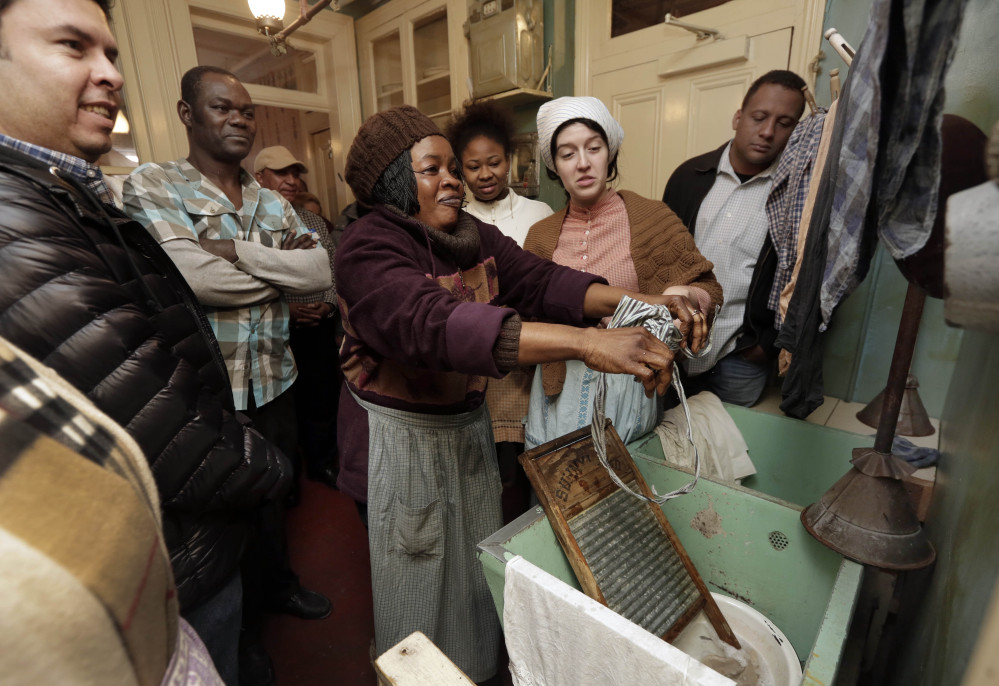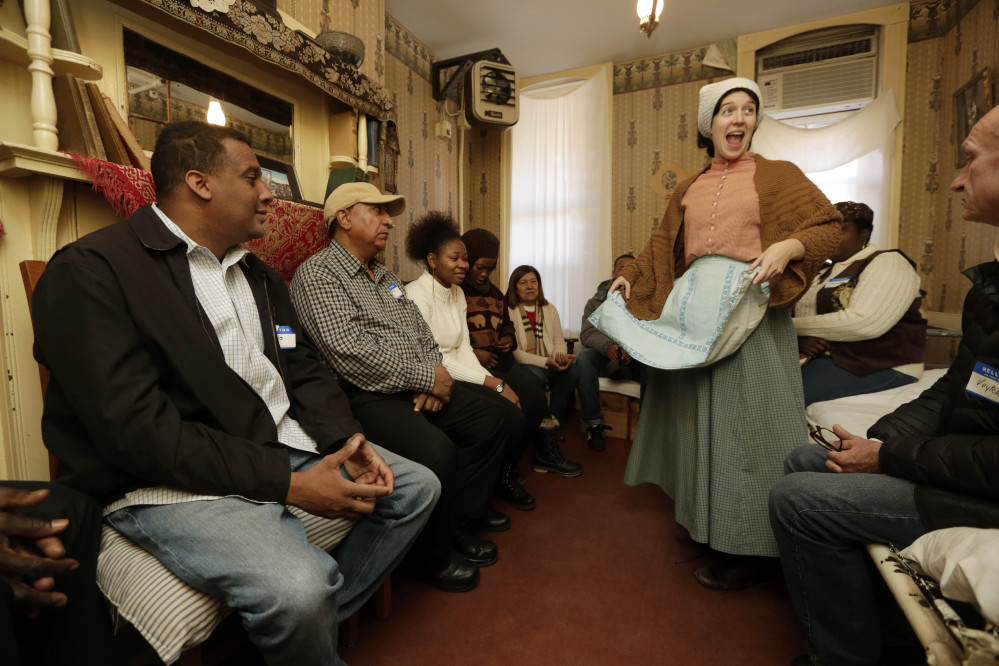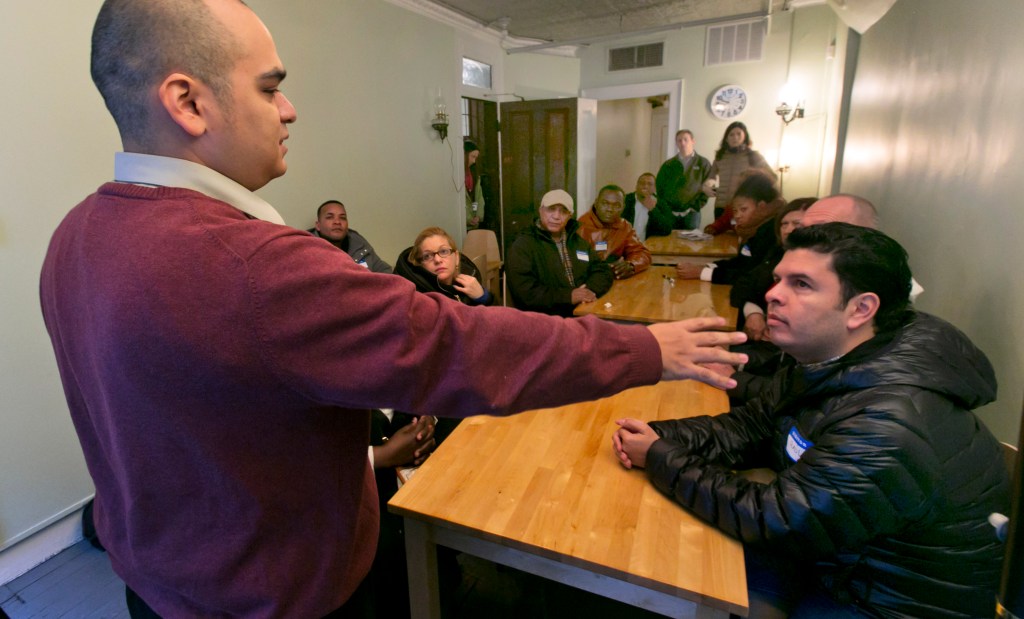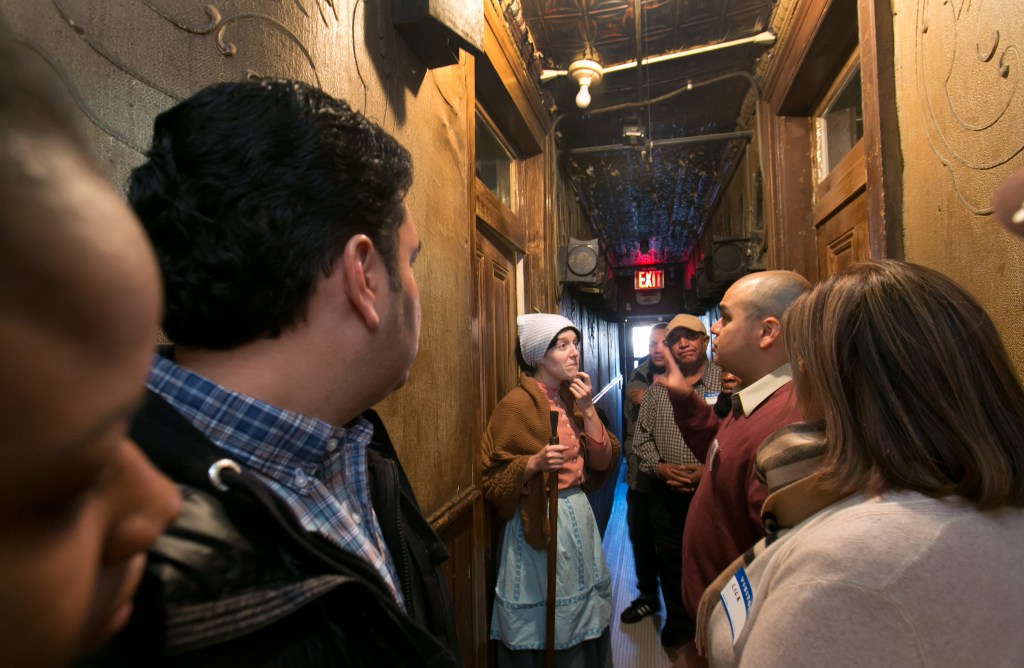NEW YORK – The actress playing a teenage Jewish immigrant in 1916 never stepped out of character as she talked about the hardships of living in three small rooms with nine family members. Her captive audience of 11 – squeezed into her tiny apartment at the historic Tenement Museum in lower Manhattan – were immigrants themselves; some recently arrived in New York City from Venezuela, Mali and other far-flung nations.
The group, representing eight countries, spent several hours one recent morning at a workshop that uses the museum’s exhibitions of authentic former tenants’ apartments to help the recent immigrants build their language skills.
Called Shared Journeys, the workshops in English for Speakers of Other Languages, or ESOL, encourage participants to imagine life in the tenement and to share and compare their own experiences to those of the early Irish, Italian, Jewish and German immigrants.
Voytek Chachlowski, 55, who came to the U.S. from Poland 20 years ago, said he could easily relate to 14-year-old Victoria Confino’s story of living in cramped conditions. When he first arrived, he had to “share two rooms and one bathroom with seven people.”
The program is one of many immersive experiences at the museum located in a restored 4-story tenement building on the Lower East Side that housed 7,000 working class immigrants between 1863 and 1935.
Seven of the original apartments are restored, complete with drab furnishings, peeling wallpaper and laundry strung over a coal stove; three others have been intentionally left as they were when the building was condemned in 1935.
Kathleen Fletcher played Victoria, whose Jewish family came from Greece, for the visiting group from the International Rescue Committee, an organization that helps refugees resettle. She is one of 15 “costumed interpreters” who bring to life the stories of the tenement’s residents.
“It gets to the heart of the museum mission most immediately, revealing the challenges of people of the past, present and future,” she said.
Jennifer Call, the Rescue Committee’s family education coordinator, said her groups sometimes start off shy but the interactive experience gets them talking. “Field trips like this really bring the class together,” she said.
Before visiting Victoria’s first-floor apartment along a dim, dilapidated hallway, the group gathered in a visitor’s center classroom. There a museum worker gave a short history on Victoria’s family and her job sewing aprons and introduced them to unfamiliar vocabulary words like “tenement” and “homesick” before inviting them to share their own stories. Later they reconvened in the classroom for further discussion on topics that touched on religious freedom and education.
The classes are adjusted according to the level of English proficiency but always focus on the museum’s mission of connecting immigrants of today with immigrants of the past. They are popular with dozens of organizations and language schools that offer English as a second language. The adult program recently expanded to include high school and middle school students. The museum offers 150 workshops and averages about 1,700 participants a year.
Victoria’s story is one of six interactive experiences at the museum, each providing an opportunity to discuss social and civic issues of the day that still resonate today.
They include the 1935 apartment of Rosaria and Adolpho Baldizzi, who came to the U.S. during the height of the first immigration restrictions. Discussions sometimes focus on what it means to be “American.” Or visitors can choose to go to the 1897 apartment of the Levine family, who ran a small garment factory in their home. They later talk about the conditions in factories and the larger issue of acceptable working conditions.
Raul Betancourt, 39, like others attending the workshop, thought life for immigrants was easier today. He quickly found an apartment through the Internet after coming from Venezuela two months ago.
“Technology makes a big difference,” he said.
Send questions/comments to the editors.







Success. Please wait for the page to reload. If the page does not reload within 5 seconds, please refresh the page.
Enter your email and password to access comments.
Hi, to comment on stories you must . This profile is in addition to your subscription and website login.
Already have a commenting profile? .
Invalid username/password.
Please check your email to confirm and complete your registration.
Only subscribers are eligible to post comments. Please subscribe or login first for digital access. Here’s why.
Use the form below to reset your password. When you've submitted your account email, we will send an email with a reset code.